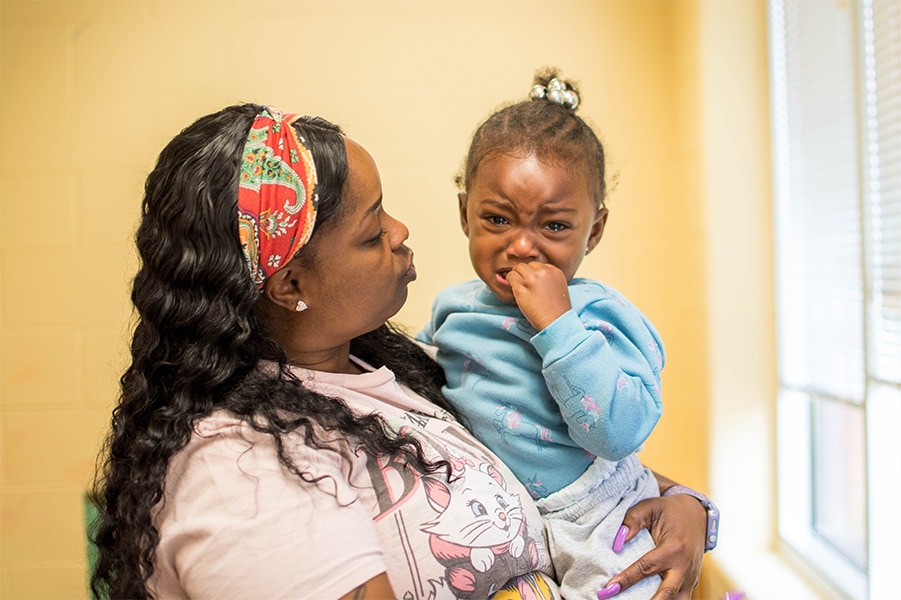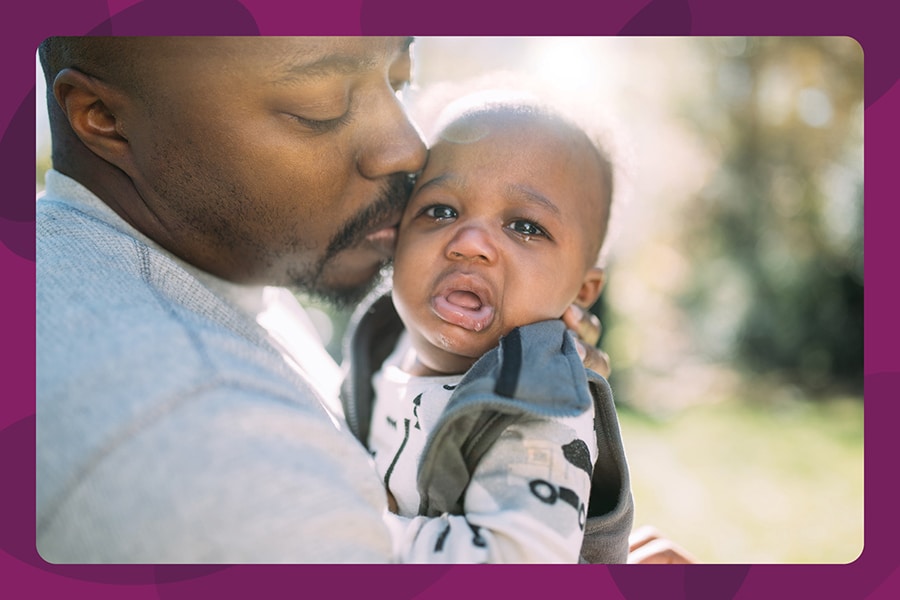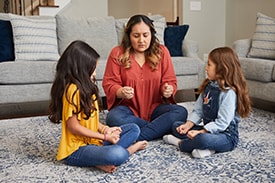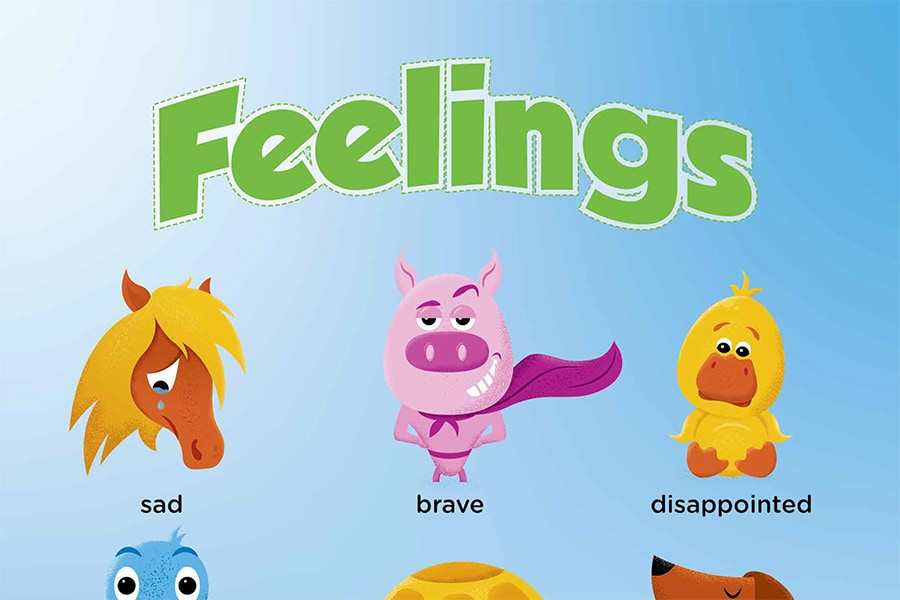Co-Regulation: Supporting Emotional Development

Experiencing emotional ups and downs is a part of being human. But just as we’re born with a voice but no knowledge of any words, we’re also born with a range of emotions but no knowledge of how to manage them.
Our ability to manage emotions in healthy ways is called emotional regulation. Emotional regulation is a skill we learn over time from a caring adult. That’s what makes being a caregiver in a child’s life so impactful. Whether we’re a parent, coach, teacher, or other caregiver, we all have the ability to teach kids how to manage their feelings. And while it’s typically best to teach children emotional regulation skills from birth, it’s never too late to start.
So, what does teaching kids about emotional regulation look like? It all comes down to the relationship you’re building with your child, and an ever-evolving practice called co-regulation.
In this article:

What is co-regulation?
Co-regulation is the supportive process between a safe, stable, nurturing adult and a child that helps the child develop their ability to regulate emotions on their own (self-regulation). Co-regulation is a practice our kids will always need, even as they age and become better able to self-regulate. For example, newborns completely rely on caregivers to soothe them when they’re crying. Teenagers, however, may just need a caring adult to listen as they work through situations and manage their feelings.
Helping our children with their emotions through co-regulation is important because it helps them:
- Manage stress
- Solve problems
- Adapt to challenges
- Take healthy risks
- Practice healthy coping and regulation skills
Co-regulation not only looks different for every child, but it also looks different for every caregiver in your child’s life. That’s right, co-regulation isn’t all on your shoulders! Ideally, our kids will have many caring adults who support them throughout their lives. The key is to remember that no two caregivers or children are the same, making the developmental process of co-regulation unique to everyone.

Who plays a role in co-regulation?
When we think about all the caregivers from our own childhood who shaped us into the adults we are today, the list can get lengthy. A “caregiver” can be any adult that provides care and support to kids and teens. This includes but is not limited to:
- Parents
- Guardians
- Teachers
- Childcare providers
- Coaches
- Camp counselors
- Youth group leaders
And with every unique caregiver comes their own unique experiences with emotional regulation. For instance, the way your child’s soccer coach handles a player’s frustration after a missed goal might look different from how your child’s math teacher handles a student’s academic anxiety before a big test.
Knowing that multiple caregivers will support our kids throughout their life can help take the pressure off our doing it perfectly. Emotional regulation is not linear, meaning there’s no exact way to co-regulate with your kids. If we prioritize the relationship we’re building with our children first, finding the co-regulation techniques that work best will come with time.

Co-regulation as kids grow
The amount of emotional support we give our kids will change as they grow and develop. This change is caused by factors like your child’s age, developmental level, temperament and environment.
But what does this change in support look like for caregivers? In the early stages of a child’s infancy, for example, caregivers provide full comfort and support. Whereas as kids get older and develop the skills to regulate emotions on their own, caregivers typically don’t need to provide as much support.
Despite your child’s gradual transition from fully depending on you to becoming independent, you being a part of their support system never completely goes away. You’ve built a relationship with your child, meaning you’re a part of their support system for life. It’s important for your child to know that even in adulthood, it’s OK to lean on others.

Co-regulation techniques by age
In parenthood, we often hear, “The days are long, but the years are short!” In a similar way, co-regulation techniques might feel slow to catch on but quick to change as kids and teens develop. Knowing this, what behaviors can caregivers expect as kids develop? And which co-regulation techniques are typically used with every developmental stage?
| Age |
What to expect |
Co-regulation strategies |
|---|---|---|
| In the earliest years of life, babies are fully dependent on caregivers to provide comfort and ensure that needs are met. |
Responsive caregiving: When an infant cries, use a soothing voice or gentle rocking to calm them. |
|
| Young children experience a wide range of emotions and depend on us to build their awareness of feelings. |
Normalize and validate feelings: When a child feels emotional, empathize with those feelings while modeling your own calm and coping. |
|
| Young kids depend on grown-ups to teach and model healthy expression of feelings. |
“I wonder …” statements: Gently encourage kids to identify feelings and emotional expression, especially when they feel emotional. |
|
| As children grow, they look to us as teammates and models for how to manage big emotions. |
Open-ended questions: Use curiosity to encourage problem-solving and use of healthy coping skills.
|
|
| Children become youth who, with practice and support, can express and manage emotions more independently as they enter young adulthood. |
Set the stage for safe, open communication: Show active listening by putting away distractions, relaxing your body language and using “team” language: |

Tips for becoming an effective co-regulator
Since co-regulation looks different for everyone and is always changing, it’s helpful to have effective co-regulation tips like these in your back pocket:
- Regulation starts with us!
Caregivers best support emotional regulation in kids when we’re proactive about taking care of ourselves (e.g., through rest, physical activity, healthy mealtimes and social support). Engaging in our own self-care as adults models healthy coping for our kids and opens the door for them to practice these same strategies. - Pause, breathe and respond.
As adults, it can be hard to remain calm when kids are in distress. Pay attention to signs from your body that you are becoming tense or anxious during challenging moments with kids. Take a moment to pause and breathe before responding. - Normalize and validate kids’ feelings.
When we show kids that their feelings are normal and valid, they feel safer and more secure. This sense of security is vital for emotional development and sets the tone for effective coping and problem-solving. Example: "It makes sense that you’re feeling frustrated. I get it.” - Be a present and supportive listener.
When we are present and available to listen, this lets kids know we’re there to offer comfort and a sense of security—it’s a non-verbal way of communicating to them, "I'm here with you, even when it's tough." Listening is a form of reassurance that’s a crucial aspect of co-regulation. - Use “we” (or “team”) language.
Kids benefit from knowing that we are their partners and that we are dependable supporters. We can help them remember this by saying phrases like, “We can figure this out together,” or, “I’m on your team. How can I help?” - Use open-ended questions to encourage communication and coping.
It can be tempting to want to “fix” kids’ problems with our own advice, explanations and opinions. However, asking open-ended questions empowers kids and teens to think about their own needs and problem-solve independently. For example, when your child is in distress, try saying, “That’s a lot. I wonder what might help you get unstuck.” Or try asking, “How could we solve this problem?” or “I wonder what you need most right now?” - Model and encourage practicing coping skills.
Check out these age-specific coping skills ideas, and make time for practicing coping skills (when everyone’s calm) in your daily routine.
How to begin co-regulating with kids
Co-regulating emotions with kids isn’t a one-size-fits-all practice—no two kids, adults or relationships are the same. On top of this, we’re human! We all have hard days, making it challenging to be the perfect co-regulator every time for kids.
What matters first is establishing a safe, stable and nurturing relationship between yourself and your child. From there, by learning the ins and outs of emotional regulation and what it looks like in kids and teens, you can help kids regulate their emotions at any age or stage. Remembering all of this can set you up with the confidence to help guide children through their emotions to the best of your ability and be a part of their support system for life.







